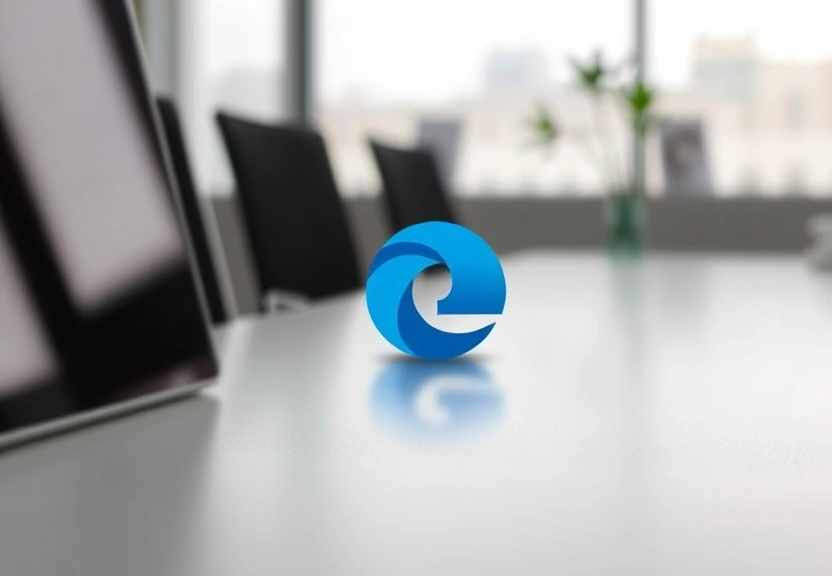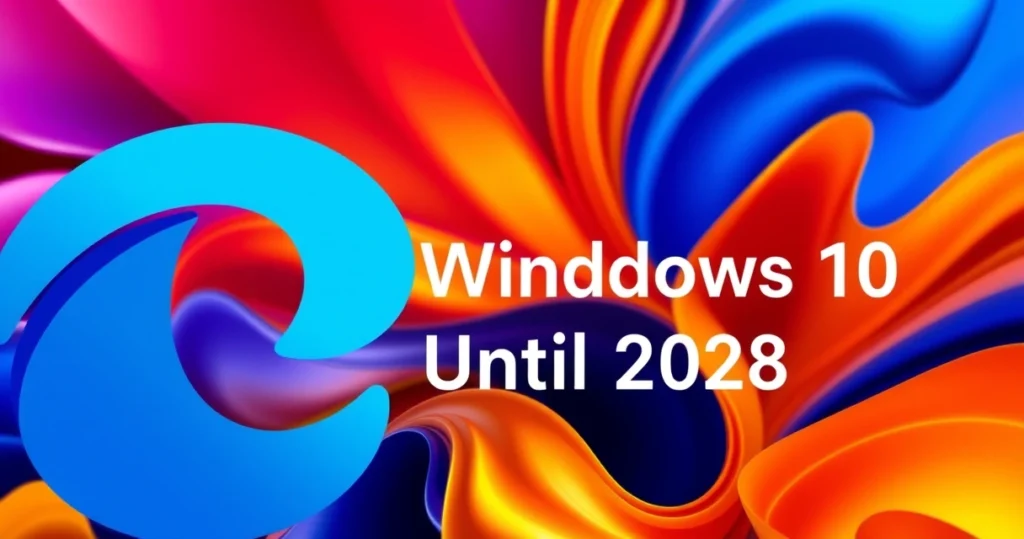Microsoft Edge to Receive Support on Windows 10 Until 2028
In a significant announcement that has caught the attention of users and tech enthusiasts alike, Microsoft recently confirmed that its flagship browser, Microsoft Edge, will continue to receive support and updates on Windows 10 until at least October 2028. This news arrives against the backdrop of Windows 10’s end-of-support date, which is set for October 2025. While the operating system may be phased out, the longevity of Microsoft Edge presents an interesting dynamic for users who still rely on Windows 10 for their daily tasks.

As organizations and individuals continue to navigate the digital landscape, the implications of this extended support for Microsoft Edge raise several questions about browser longevity, user experience, and the future of web browsing on older operating systems. This article will delve into the significance of this announcement, what it means for Windows 10 users, and the broader context of browser support in an evolving technology landscape.
The Importance of Browser Longevity
In an era where online security, compatibility, and performance are paramount, the longevity of a web browser is crucial for users. Microsoft Edge, which initially launched in 2015, has evolved significantly, adopting features that prioritize speed, security, and user experience. However, as Windows 10 approaches its end of support, the question arises: why is Microsoft committing to keeping Edge alive on this aging operating system?
Security Updates
One of the primary reasons for extending support for Microsoft Edge on Windows 10 is the need for ongoing security updates. With cyber threats becoming more sophisticated, maintaining a secure browsing experience is essential. Users can feel safer knowing that Edge will receive regular security patches even after Windows 10 support ends.
User Experience
Furthermore, Microsoft Edge has been designed with user experience in mind. By providing continued support, Microsoft ensures that users can enjoy the latest features and enhancements without the immediate need to upgrade to a newer operating system. This approach not only benefits individual users but also organizations that may still rely on legacy systems.
What Does This Mean for Windows 10 Users?
The announcement has several implications for Windows 10 users. While the operating system itself will no longer receive updates after October 2025, having a supported browser like Microsoft Edge enables users to continue accessing the internet securely and efficiently. Here are some key points to consider:
- Continued Compatibility: Users can expect Microsoft Edge to remain compatible with the latest web standards and technologies, enhancing their browsing experience.
- Access to New Features: Microsoft has committed to providing new features and improvements to Edge, ensuring that users have access to a modern browser experience.
- Support for Legacy Applications: Many businesses utilize legacy applications that may not be compatible with newer operating systems. Microsoft Edge will help bridge this gap.
Comparing Edge with Other Browsers on Windows 10
As Microsoft Edge continues to receive support, it’s essential to evaluate how it stacks up against other browsers such as Google Chrome, Mozilla Firefox, and Safari, especially for users still on Windows 10.
Performance
Microsoft Edge is known for its superior performance, particularly with resource management. It often consumes less RAM compared to its competitors, which can be crucial for users on older machines running Windows 10. This efficiency allows for smoother multitasking and better overall performance.
Security Features
Edge has integrated security features that are often highlighted as best-in-class, including tracking prevention, Microsoft Defender SmartScreen, and enhanced phishing protection. These features make it a reliable choice for users concerned about online security.
User Interface and Experience
The user interface of Microsoft Edge is designed for simplicity and functionality, with features like vertical tabs, a customizable homepage, and immersive reader mode that enhance usability. While other browsers offer similar features, Edge’s integration with Windows 10 enhances the overall experience.
Future Prospects for Microsoft Edge and Windows 10
Looking ahead, the future of Microsoft Edge on Windows 10 seems promising, but users must also consider the broader implications of continuing to use an outdated operating system. While Edge will receive updates until 2028, Microsoft encourages users to transition to Windows 11 to take full advantage of the latest features and security enhancements.
Transitioning to Windows 11
For users contemplating an upgrade, there are significant benefits to moving to Windows 11, which includes improved performance, a redesigned interface, and enhanced gaming capabilities. However, Microsoft’s commitment to Edge on Windows 10 provides a valuable cushion for users who may not be ready to make the leap.
Support Beyond 2028
While this commitment extends to 2028, it raises questions about the future of Edge and its relevance in an evolving tech landscape. As web technologies advance and user expectations shift, Microsoft will need to adapt Edge to meet changing demands. Continuous innovation will be crucial to maintaining Edge’s position as a leading web browser.
Frequently Asked Questions (FAQ)
1. Will Microsoft Edge still receive security updates after Windows 10 support ends?
Yes, Microsoft Edge will continue to receive security updates until at least October 2028, despite Windows 10 reaching its end of support in October 2025.
2. What are the benefits of using Microsoft Edge on Windows 10?
Using Microsoft Edge on Windows 10 provides continued access to security updates, new features, and a modern browsing experience, all while ensuring compatibility with legacy applications.
3. Is it safe to continue using Windows 10 with Microsoft Edge?
While you can continue using Windows 10 with Microsoft Edge until 2028, it is advisable to transition to Windows 11 for enhanced security and performance features as soon as possible.
4. How does Microsoft Edge compare to other browsers?
Microsoft Edge is known for its superior performance, security features, and user-friendly interface, making it competitive against other popular browsers like Chrome and Firefox.
5. What should I consider when transitioning to Windows 11?
When transitioning to Windows 11, consider hardware compatibility, new features, and overall performance improvements that can enhance your computing experience.
Conclusion
In conclusion, Microsoft’s decision to extend support for Microsoft Edge on Windows 10 until 2028 is a strategic move that underscores the importance of browser longevity and user safety. For those who remain on Windows 10, this means continued access to a modern, secure browser that can navigate the complexities of today’s web environment. However, as technology continues to evolve, users should remain mindful of the benefits that come with upgrading to newer operating systems, ensuring they stay ahead in a rapidly changing digital landscape.
📰 Original Source
Este artigo foi baseado em informações de: https://tecnoblog.net/noticias/microsoft-edge-vai-sobreviver-no-windows-10-ate-2028/



